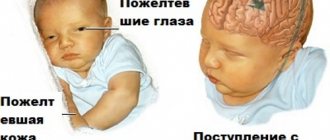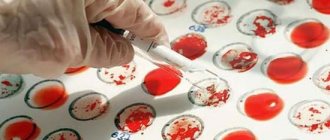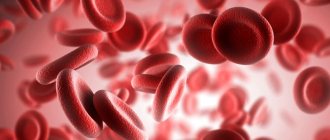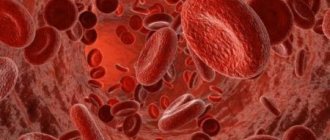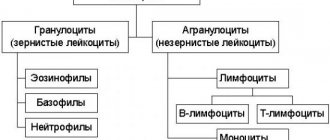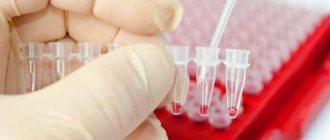Blood loss and consequences
The human body is prudent, and not all blood constantly circulates in the human body, performing its functions.
The body also has so-called blood depots (reserves), where it is stored in case of special need. Blood is stored in the spleen, liver, and a number of other organs, and with heavy blood loss, as well as in stressful situations, it can be released into the general bloodstream. However, even this reserve may not be enough if we are talking about severe bleeding and large blood losses. This applies primarily to arterial and severe venous bleeding. Every person should be able to recognize them in order to be able to help themselves and their loved ones if necessary. For arterial bleeding, which is especially dangerous and can lead to death. In this case, it is necessary to apply a tourniquet and immediately hospitalize the person. The tourniquet can only be applied for 2 hours, in cold weather - no more than an hour, otherwise there is a risk of necrosis and limb loss. In case of venous bleeding, when dark blood flows in a continuous stream, it is necessary to apply a pressure bandage and also consult a doctor.
Chronic blood loss
In addition to such bleeding, which usually occurs due to injuries, there is another category - chronic blood loss. They occur during oncological tumors, ulcers, hemorrhoids and other phenomena. Symptoms develop gradually, because the body initially strives to compensate for losses. This phenomenon leads to anemia, constant fatigue and loss of strength, dizziness, pallor, and problems with the immune system. It is necessary to establish the cause of these disorders and undergo treatment, after which the blood condition will improve.
Blood is the most important fluid in the body, and it contains from 3 to 5 or more liters. But losing more than 30 percent of blood is fraught with serious consequences. It is worth taking care of your health and not risking it.
Safe minimum
Everyone should know how many liters of blood there should be in the human body so that it does not threaten his life. Experts believe that if a person loses more than 2 liters of biofluid, this will lead to death. This pathological condition can be diagnosed against the background of exposure to a variety of unfavorable factors. In most cases, blood loss occurs with sudden and heavy bleeding. Pathology can also be diagnosed during surgical interventions and during the recovery period. During treatment of various diseases, patients may be diagnosed with bleeding. A fairly common cause is hemodialysis.
Normally, a person should have at least 3 liters of biofluid. That is why, if he suffers from bleeding, then he needs to be provided with emergency medical attention. In order to save a life in case of blood loss, a donor transfusion is performed. Donors who have the same group donate blood to help people. The safe volume of biofluid is 450 milliliters. Safe plasma collection is 600 milliliters. Plasma donation can be carried out no more than twice a month. Donors are allowed to donate biofluids once every 4 weeks. This period is quite enough to restore the qualitative and quantitative blood composition.
Medical institutions that collect donor biofluid have their own database. There are diseases in which a person is strictly prohibited from becoming a donor. That is why special tests are recommended before collecting biofluid.
How many liters of blood are there in a person?
5.5 liters is exactly the amount of blood in the body of an adult. 50 billion - this is the number of blood cells contained in 1 liter of blood - physically it is even impossible to imagine! One drop contains 300 thousand red cells. If you mentally combine these cells into a chain, without changing their actual size, then this chain can turn around the globe four times.
Despite their microscopic size, cells are capable of occupying a truly enormous area. For example, if these cells are covered with carpet, then its total area will be 4090 meters2. Since almost a quarter of the blood feeds the lungs all the time, this means that about 1000 meters2 of the surface of the blood cells comes into contact with air. Every second, the air sacs of our lungs pass through about 2 billion cells of this red liquid.
Since the air on the plain is under high pressure, the oxygen content in it is less than in the highlands. Therefore, where a person lives directly affects how many blood cells there are - the higher a person lives, the more of them he has. People living in the mountainous regions of Switzerland have 50 percent more blood cells than people living in London.
QUANTITY AND PROPERTIES OF BLOOD IN CHILDREN
Home Favorites Random article Educational New additions Feedback FAQ⇐ PreviousPage 7 of 11Next ⇒
The amount of blood in newborns is approximately 0.5 liters. Blood mass in relation to body weight is: in newborns – 15%; in infants – 11%; in adults – 7%. Boys have a greater relative amount of blood than girls. The relative amount of blood approaches that of an adult by age 12.
The relative density of blood in the first days after birth is 1060-1080 g/l, slightly higher than in older children and adults (1050-1060 g/l).
Blood viscosity in newborns is higher than in adults. Within 1 week after birth, viscosity begins to decrease. By the end of 1 month, viscosity reaches values close to those of adults. The higher relative density and viscosity of blood in newborns is due to the increased content of red blood cells.
HEMATOCRITIC NUMBER
Hematocrit number is the ratio of the volume of formed elements to the volume of blood plasma (in adults it is 40-45%). At 2.5 months of intrauterine development it is 31-36%, in an eight-month fetus - 40-45%. On day 1 after birth, the hematocrit is higher than in adults (54%). This is due to the high concentration of red blood cells and the large average volume of individual red blood cells. By 5-8 days of life it decreases to 52%; by the end of 1 month – up to 42%. In a one-year-old child, the volume of formed elements is 35%, at 5 years old - 37%, at 11-15 years old - 39%.
BLOOD PLASMA REACTION
The blood plasma reaction of adults is slightly alkaline (pH = 7.35-7.40). Fetuses and newborns are characterized by acidosis. Acidosis is metabolic. It is caused by the formation of under-oxidized metabolic products. The alkaline reserve is low, the content of buffer bases (bicarbonate, protein and hemoglobin) is 23-41 mmol/l (in an adult - 44.4 mmol/l). pH values close to those of adults are established during the first 3-5 days. Throughout childhood, a slight compensated acidosis persists, gradually decreasing with age.
BLOOD PLASMA PROTEINS
Proteins in the blood plasma of fetuses and children are contained in lower concentrations than in adults. In newborns they are 56 g/l; at the end of the first month their quantity decreases to 48 g/l; by 3-4 years of age, on the contrary, it gradually increases, reaching adult values (70-80 g/l).
The ratio of protein fractions in newborn children differs from adults: a higher level of gamma globulins (they pass through the placental barrier). After birth, gamma globulins are broken down and their levels decrease, reaching a minimum by 3 months. Then their number gradually increases and reaches the adult norm by 2-3 years.
The content of alpha-1 and beta globulins in the blood plasma of newborns is lower than in adults. By the end of the first year, their maintenance reaches the level of adults. From 2 months to the end of 1 year of life, the concentration of alpha-2 globulins exceeds the adult norm.
A decrease in globulin content in infants leads to a relative increase in the amount of albumin, which is more pronounced by the 2nd month of life. The total concentration of amino acids in the blood in children of the first years of life is 35% lower than in adults.
AGE CHANGES IN THE NUMBER AND
PROPERTIES OF ERYTHROCYTES IN DIFFERENT PERIODS
CHILDHOOD
In the early stages of intrauterine development, there are few red blood cells in the blood (in a 5-week embryo - 0.2 x 1012 / l, in a 4-month embryo - 1.5 x 1012 / l).
Fetal red blood cells are approximately twice the size of adult red blood cells and contain more hemoglobin. In the early stages of embryogenesis, predominantly nucleated red blood cells enter the blood; by the time of birth, their number decreases and amounts to 0.1% of the total number.
Thus, during fetal development, there is a gradual decrease in their diameter and volume, as well as the number of nucleated cells (the volume of red blood cells in the first days after birth is 80 ml/kg, and in adults - 30 ml/kg).
Immediately after the birth of a child, the concentration of red blood cells is higher than in an adult (5.9 million per mm3). Their number increases during 1 day of life (6.1 million). In the neonatal period, a decrease in their concentration is observed by days 9-15 (5.4 million); by 1 month their number reaches 4.7 million per mm3. The decrease in the concentration of red blood cells is explained by their intensive destruction. The rate of destruction of red blood cells is maximum on days 2-3 after birth (4-7 times more than in adults). After a month, the destruction of red blood cells approaches the levels of adults. Simultaneously with the destruction, new red blood cells are formed, which is necessary to replace fetal hemoglobin with adult hemoglobin. The destruction of red blood cells is accompanied by jaundice, which appears 2-3 days after birth and disappears by 7-10 days.
The lowest concentration of red blood cells is observed at the age of 5-6 months (4.1 million/mm3). Exposure to unfavorable factors (improper feeding, lack of walks) reduces their concentration (up to 3 million/mm3). In the period from 5-6 months to 1 year, the concentration of erythrocytes gradually increases (up to 4.2 million/mm3). At the age of 1 year to 25 years, the number of red blood cells is 4.2-4.6 million per mm3. Individual variations in red blood cell concentration are explained by accelerated body growth.
The average lifespan of red blood cells in the newborn period is less than that of adults. It is: for children 2-3 days of life - 12 days; by day 10 it increases almost 3 times. In children older than one year, it is approximately equal to that of an adult (120 days).
Hemolysis in hypotonic solutions in newborns begins at a higher concentration of NaCl than in adults. This indicates the presence of erythrocytes with low osmotic stability. The maximum salt concentration at which complete hemolysis occurs is, on the contrary, lower in newborns. This indicates the presence of highly resistant erythrocytes.
In newborns, the erythrocyte sedimentation rate is 1-2 mm/h (explained by the low concentration of globulins). It increases from 2 months of life and by the end of the first year it is 3-4 mm/hour. In older children, ESR is 4-10 mm/hour.
TYPES AND QUANTITY OF HEMOGLOBIN IN CHILDREN
During certain periods of individual human development, different forms of hemoglobin are synthesized in maturing red blood cells. Fetal red blood cells contain fetal hemoglobin (HbE and HbP). By the 3rd month of intrauterine development, embryonic hemoglobin is replaced by fetal hemoglobin. At 4 months, hemoglobin, characteristic of adults, appears in the fetal blood, but its amount does not exceed 10% until 8 months.
In full-term newborns, HbF is 70%, the rest is HbA. Some newborns have (small amounts) abnormal forms of Hb that are unable to transport oxygen. Gradually, HbF is replaced by HbA. At the end of week 2, HbA accounts for approximately 50% of total Hb. In children aged 35-40 days, a significant amount of hemoglobin is represented by HbA.
The blood of newborns contains large amounts of Hb. An hour after birth, Hb=208 g/l. From the 2nd day of life, the amount of Hb decreases and by days 9-15 it is 190 g/l. At the age of 1 month – 145 g/l; by 6-7 months it reaches 120 g/l. The amount of Hb remains low for up to a year, then increases and after 15 years reaches adult values (120-140 g/l in women and 130-160 g/l in men).
The color index in the first week after birth in a child is 0.9-1.3 (in an adult - 0.8-1.0). In 1-year-old children, CP is 0.75-0.8; from one to 15 years it increases from 0.85 to 0.95.
AGE CHANGES IN QUANTITY
LEUKOCYTES AND LEUKOCYTE FORMULA
CHILDREN
In the fetal bloodstream, single leukocytes first appear at the end of 3 months.
In newborns, the content of leukocytes is increased - physiological leukocytosis. An hour after birth, the concentration of leukocytes in the blood is 18 thousand per mm3. Sometimes you encounter leukocytosis reaching 30-35 thousand. Subsequently, either leukocytosis slowly “fades away” without any visible pathological manifestations (physiological), or after 2-4 days a clinical picture of a toxic-septic condition develops. In infants, the number of leukocytes ranges from 6 to 12 thousand per mm2. After a year of a child’s life, the number of leukocytes gradually decreases and reaches the adult norm after 15 years.
Leukocytes of newborns are characterized by pronounced osmotic stability (a high content of immature forms). The motor activity of leukocytes in young children is lower than in adults.
Children are characterized by “scissors” in the content of the number of neutrophils and lymphocytes. On day 1 after birth, neutrophils account for 68%; lymphocytes – 25% (as in adults). From day 2, the number of neutrophils decreases, and lymphocytes, on the contrary, increases. At the age of 5-6 days of life, the content of neutrophils and lymphocytes levels out, amounting to 43-44% (the first physiological crossover). Subsequently, the number of neutrophils decreases, and lymphocytes increase. At 2-3 months, the number of lymphocytes is maximum (60-63%), and neutrophils are minimal (25-27%). Then the number of lymphocytes begins to decrease, and the number of neutrophils begins to increase. At the age of 5-6 years, their number levels out again (second physiological crossover). By the age of 12-13 years, the child’s leukocyte formula takes on the appearance of an adult.
⇐ Previous7Next ⇒
Blood functions
How many liters of blood a person has is determined in accordance with his individual characteristics and the functions performed by the fluid. Blood constantly moves through the system, which includes large and small vessels. They supply fluid to all organs and tissues in the human body.
Red cells deliver oxygen to tissues as hemoglobin binds to its molecules. Platelets are involved in the coagulation process during bleeding. With their help, a blood clot is formed at the site of injury. Thanks to leukocytes, protection is provided from the effects of negative external and internal factors.
What are the normal test results for a newborn?
In a completely healthy child, tests should show normal values:
- erythrocytes - 3.6 - 6.2 x 1012/l;
- platelets -150 - 400 x 109/l;
- leukocytes - 8.5 - 14 x 109/l;
- hemoglobin - 124 - 166 g/l.
Before birth, a baby's blood contains two types of hemoglobin:
- HbF (80%) - fetal (this type of hemoglobin is found only in babies inside the womb and in newly born babies, it is capable of binding more oxygen than regular hemoglobin);
- HbA (20%) - adult hemoglobin is found only in adults and in children some time after their birth (capable of taking oxygen from the air in the lungs).
